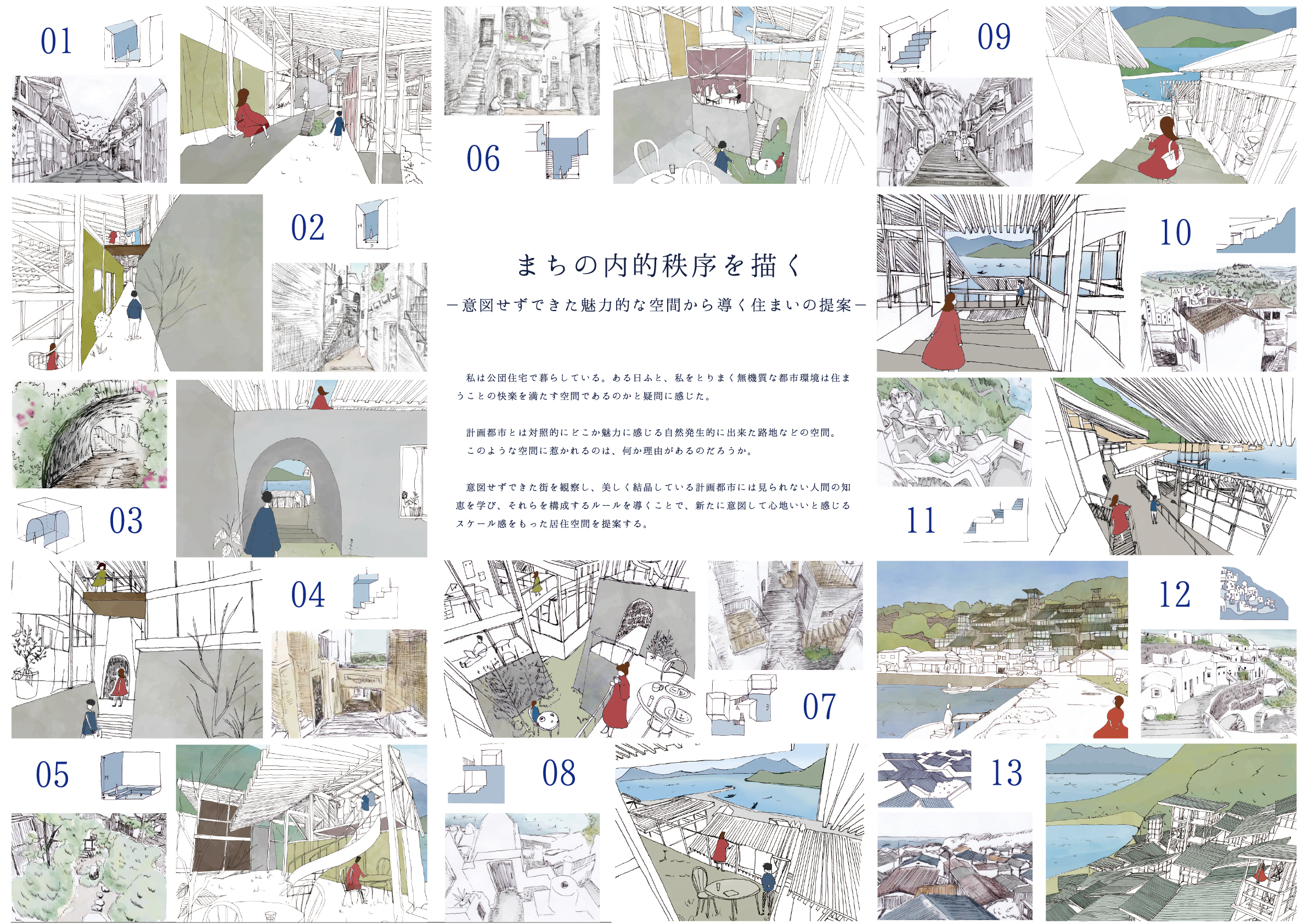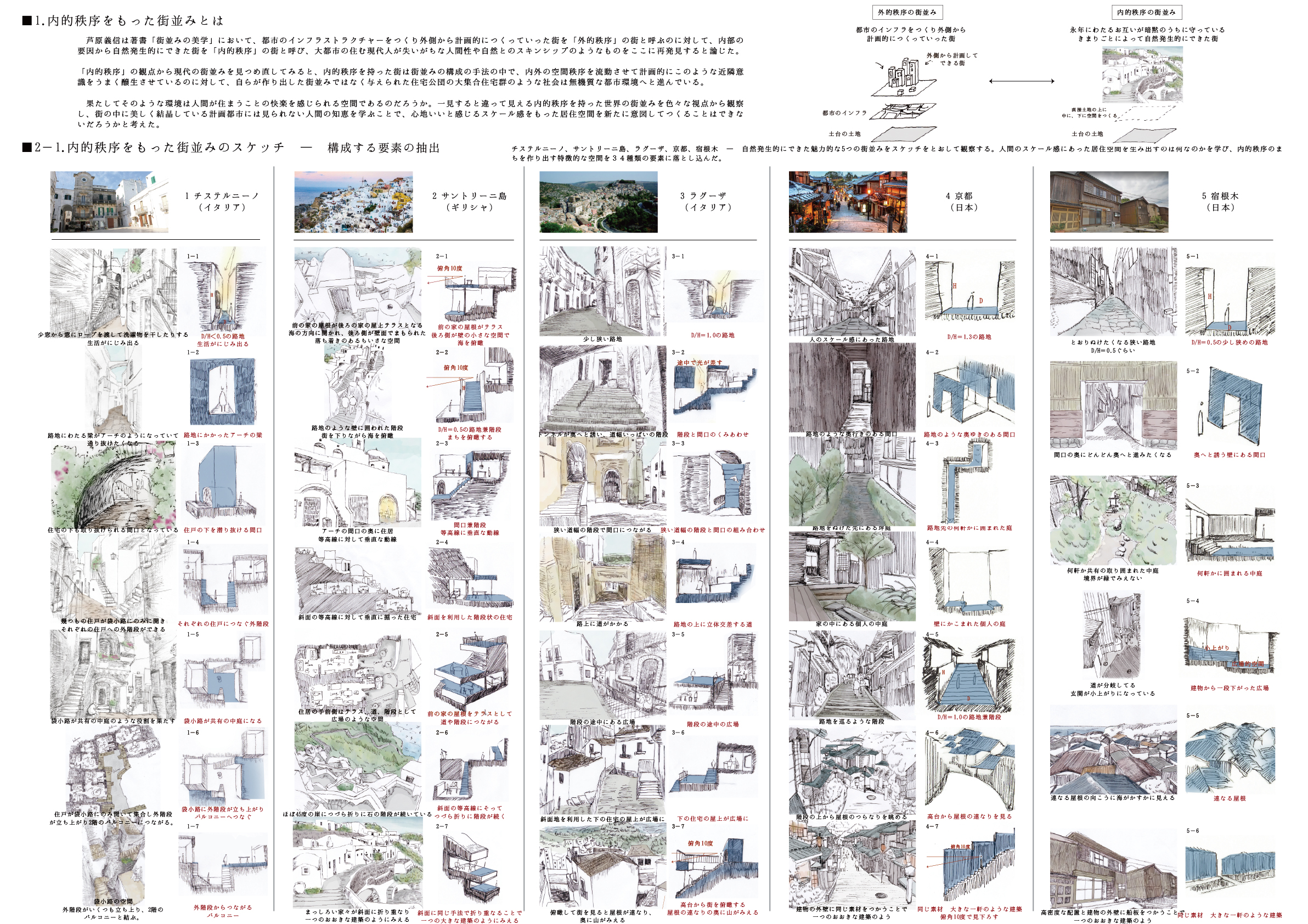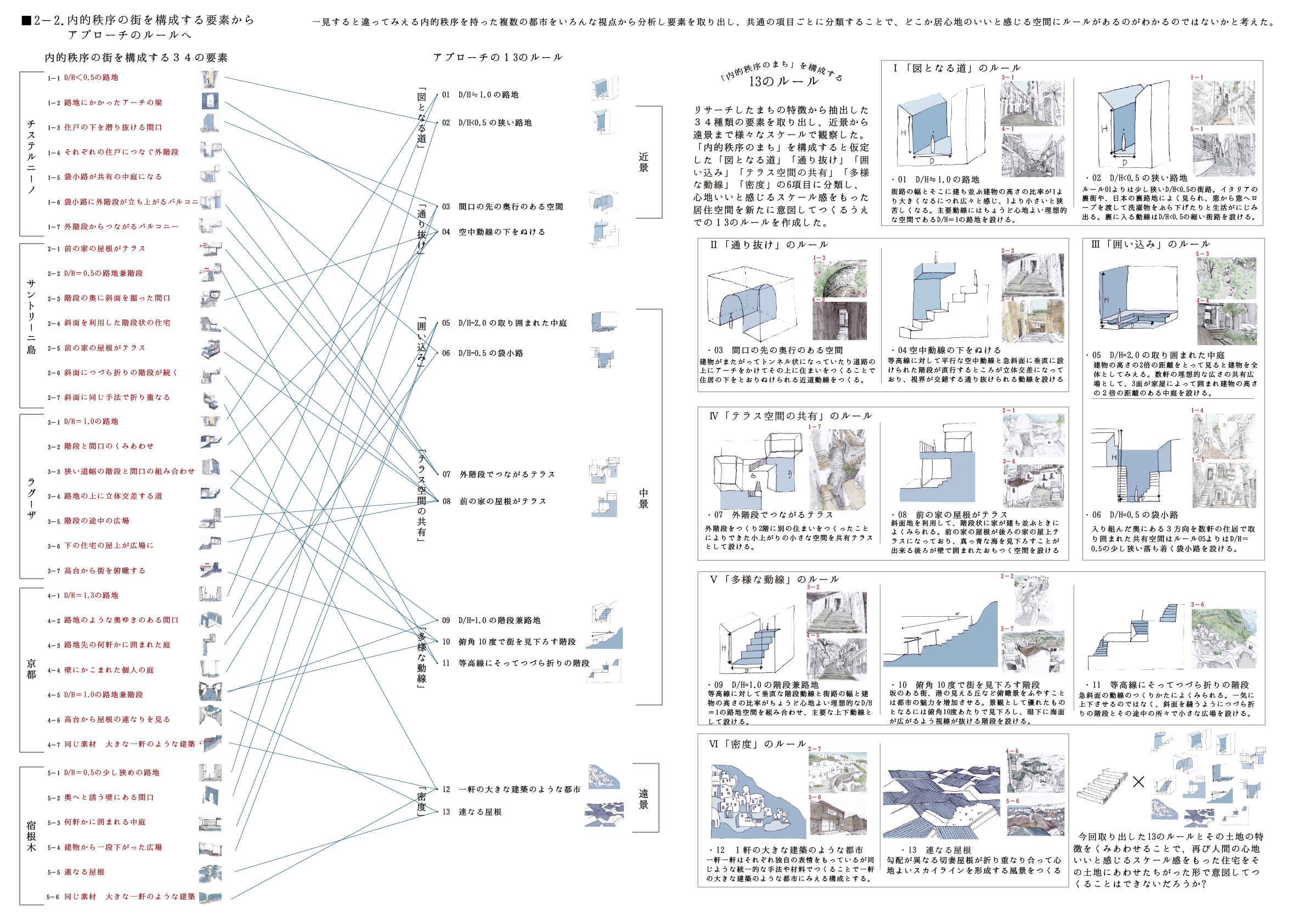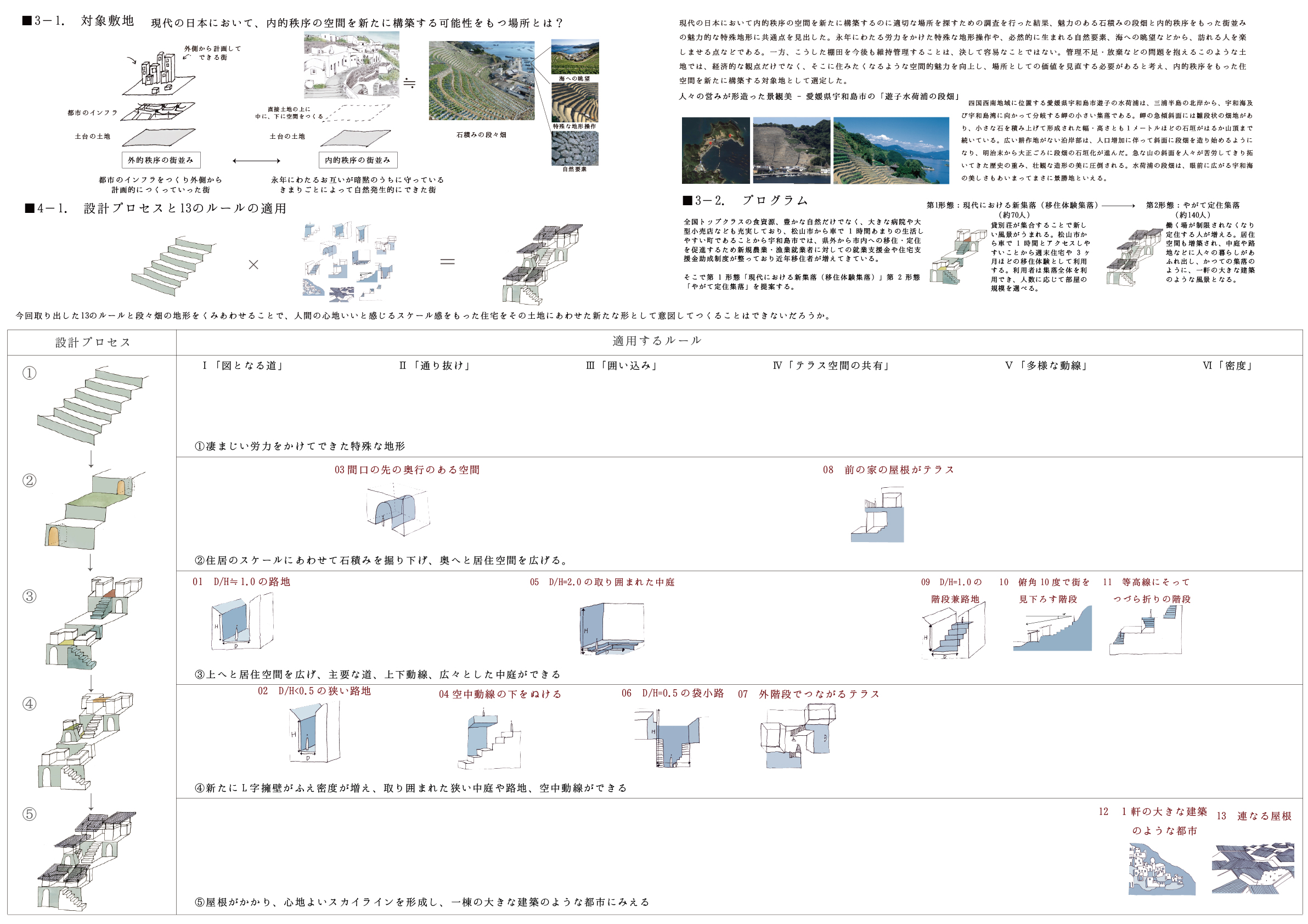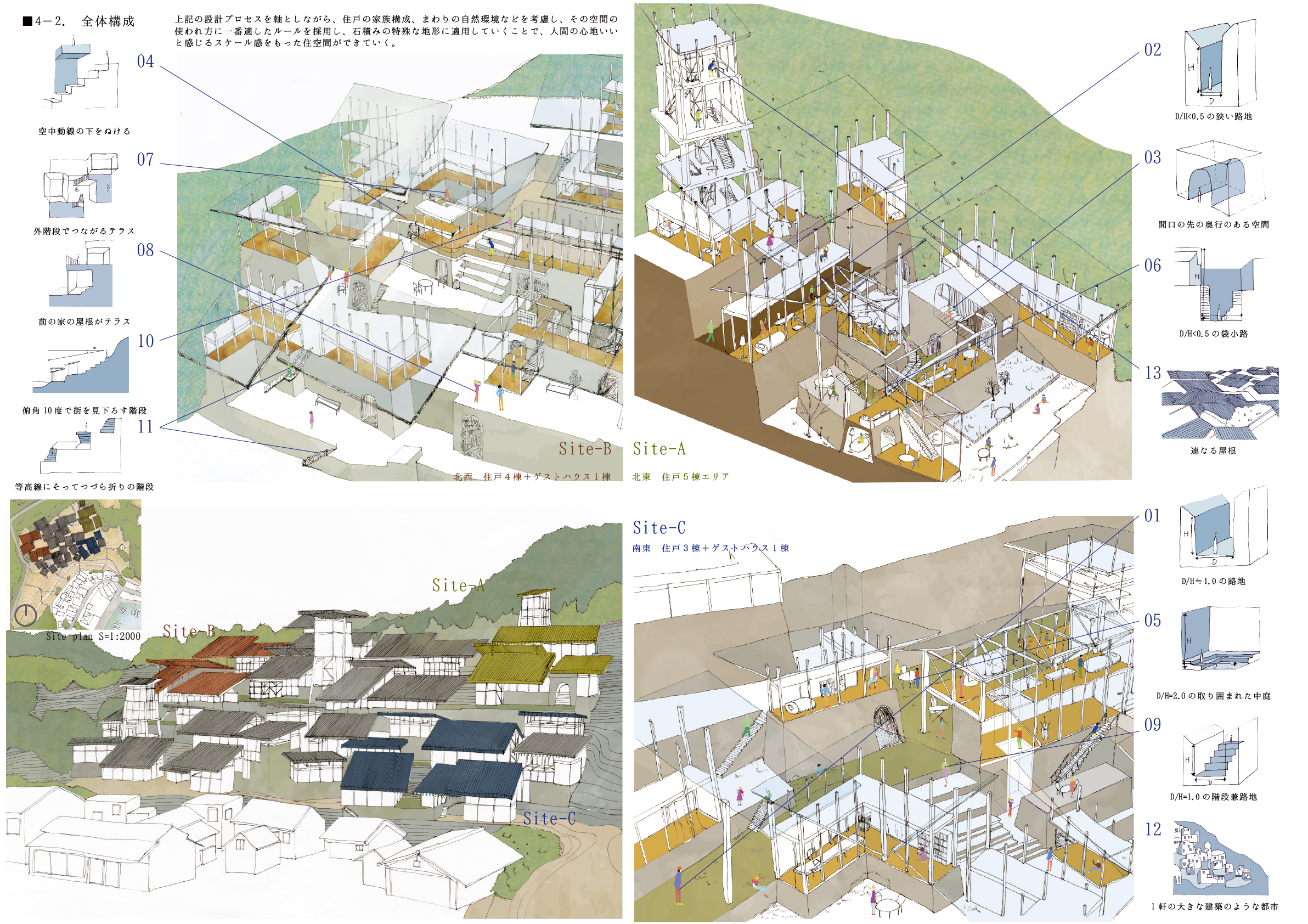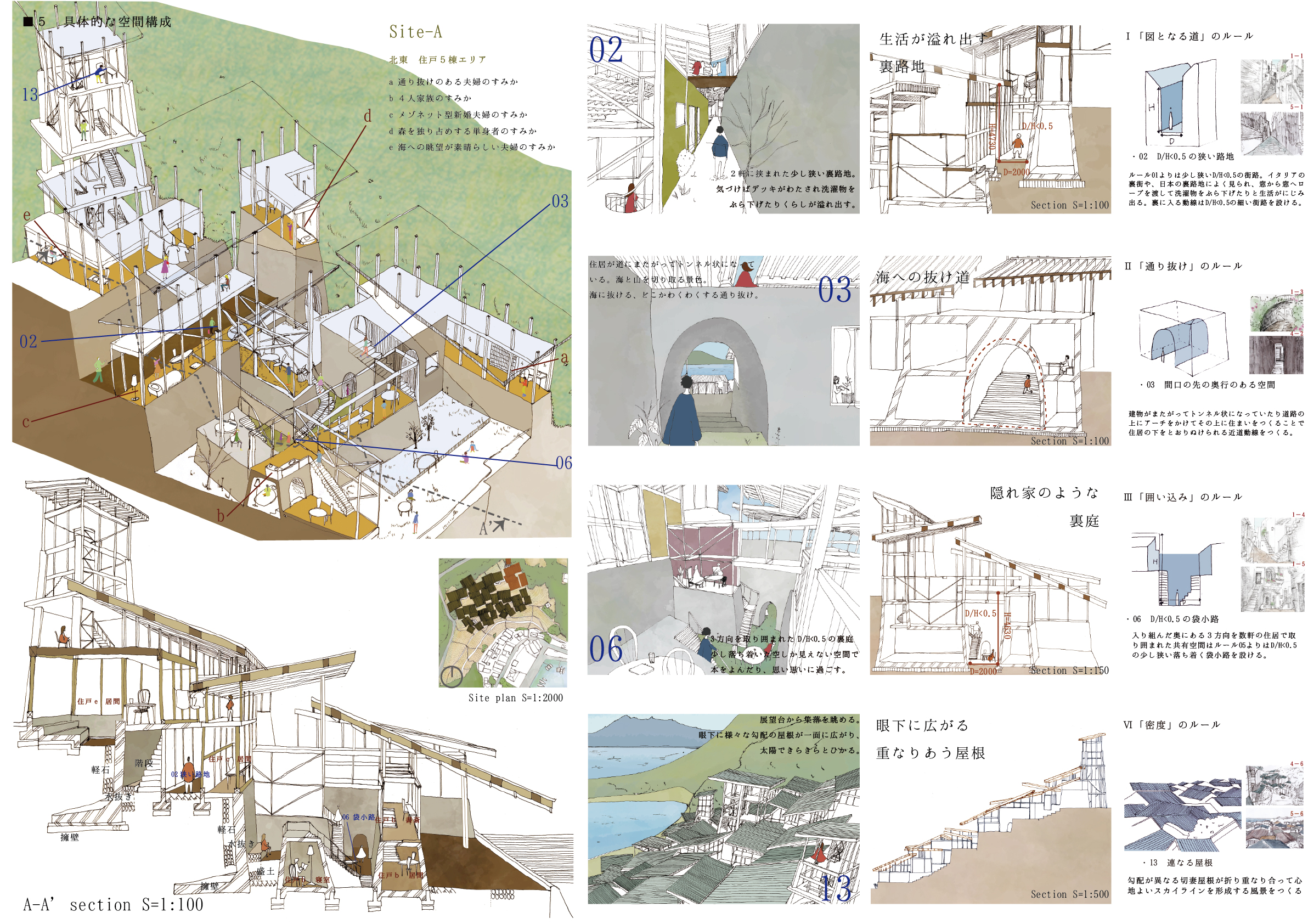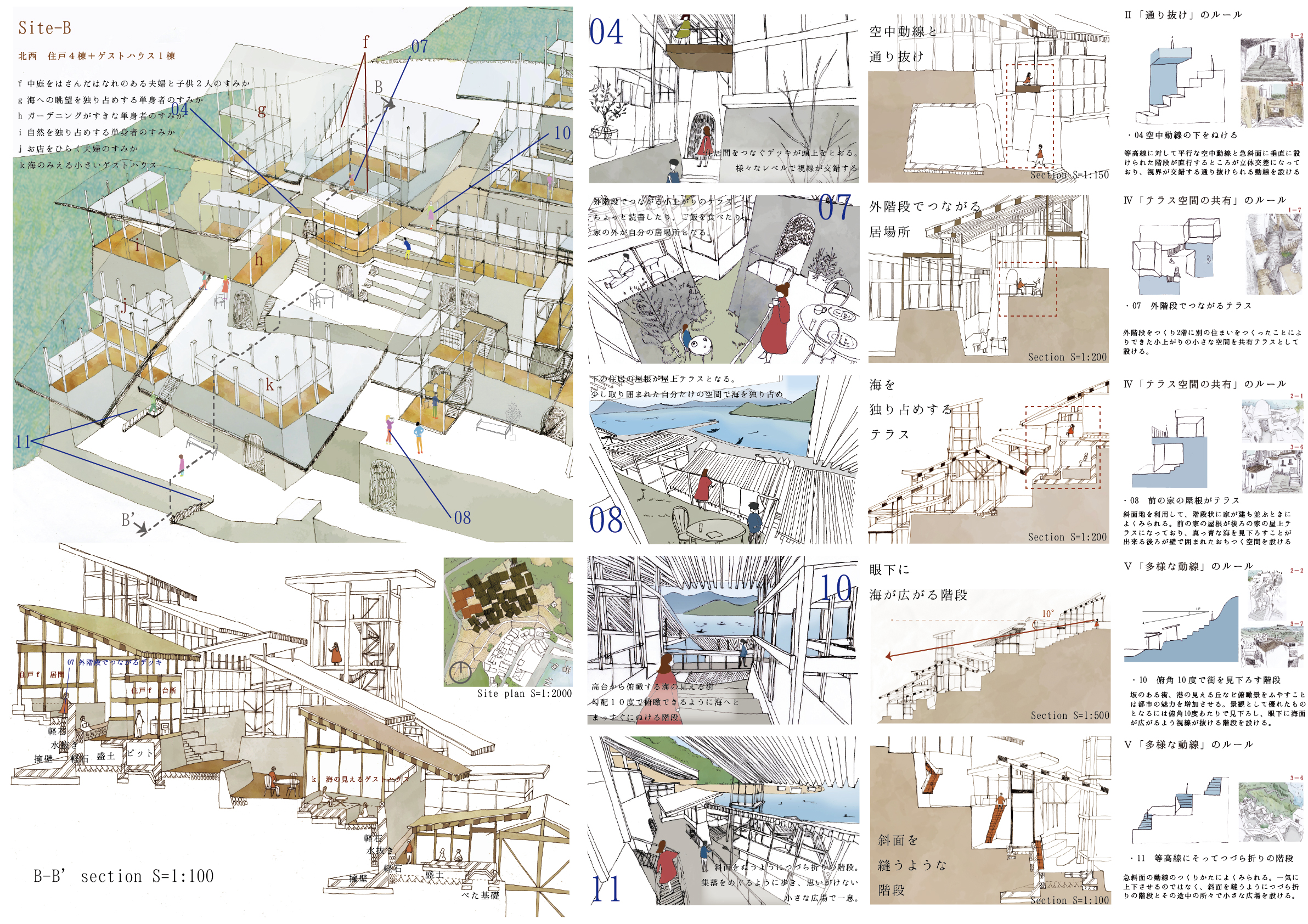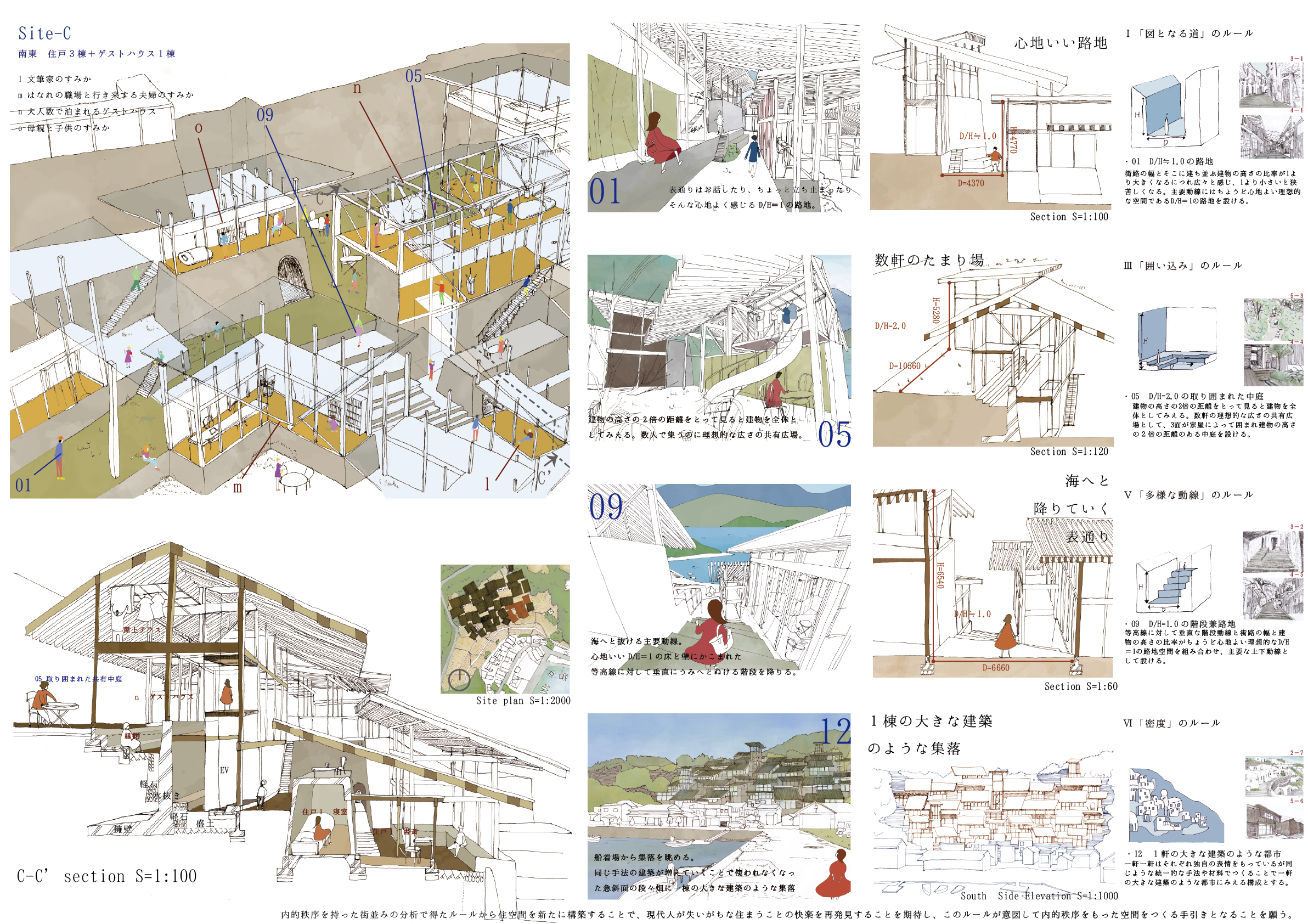琵琶湖賞the Biwako Prize
まちの内的秩序を描く ―意図せずできた魅力的な空間から導く住まいの提案― Shaping the implicate order of a village: Designing a community using a principle drawn from unintentionally designed attractive spaces
中野紗希 Saki Nakano
作品コンセプト
- JP
- EN
私は公団住宅で暮らしている。ある日ふと、私をとりまく無機質な都市環境は住まうことの快楽を満たす空間であるのかと疑問に感じた。
計画都市とは対照的にどこか魅力に感じる自然発生的に出来た路地などの空間。このような空間に惹かれるのは、何か理由があるのだろうか。
芦原義信氏は著書「街並みの美学」において都市のインフラストラクチャーをつくり外側から計画的につくっていった街を「外的秩序」の街と呼ぶのに対し、内部の要因から自然発生的にできた街を「内的秩序」の街と呼んだ。
一見すると違って見える内的秩序を持った世界の街並みを様々な視点から観察し、街の中に美しく結晶している計画都市には見られない人間の知恵を学び、それらを構成するルールを導くことで心地いいと感じるスケール感をもった居住空間を新たに意図してつくることはできないだろうか。
I live in a public housing complex. I suddenly found myself wondering if the inorganic urban environment surrounding me was a space that would satisfy the pleasure of living. In contrast to the planned city, there is something attractive about spontaneously created spaces such as alleys. Is there a reason why we are attracted to such spaces? In his book, "The Aesthetics of Streetscapes," Yoshinobu Ashihara refers to cities that have been planned from the outside by creating urban infrastructure as "externally ordered" cities, while cities that have been created spontaneously from internal factors are called "internally ordered" cities. By observing from various perspectives the cityscapes of the world that have an implicate order, and by learning the human wisdom that are beautifully crystallized in the city, can we create new intentional living spaces with a sense of scale that we find comfortable?

